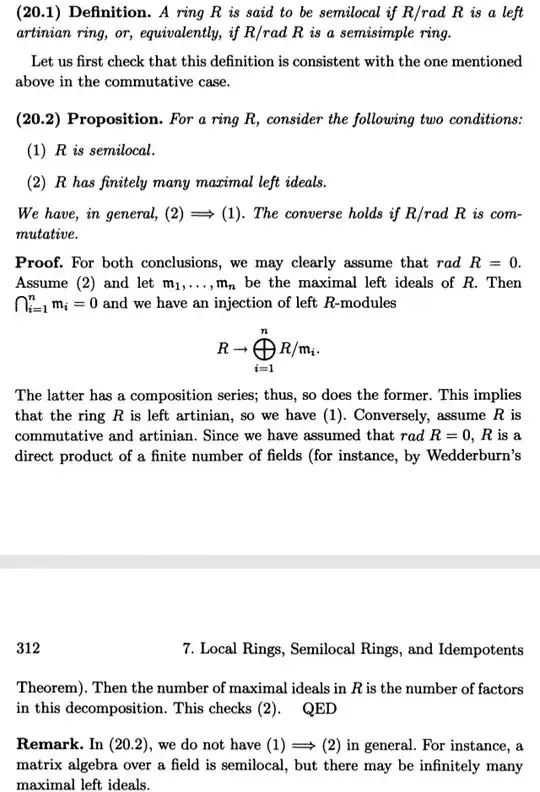I don't understand this proof.
Before I read this,I think if R is not commutative,semilocal ring still has finitely many maximal left ideals.Because the following:
1.left Artin ring has finitely many maximal ideals.
2.There has a one to one correspndence between the maximal ideals of R which contains I and maximal ideals of R/I,where I is an ideal of R.
where am I wrong?I still don't understand the example given in the Remark.what is essential difference if we don't consider commutative ring.Thank you in advance!
